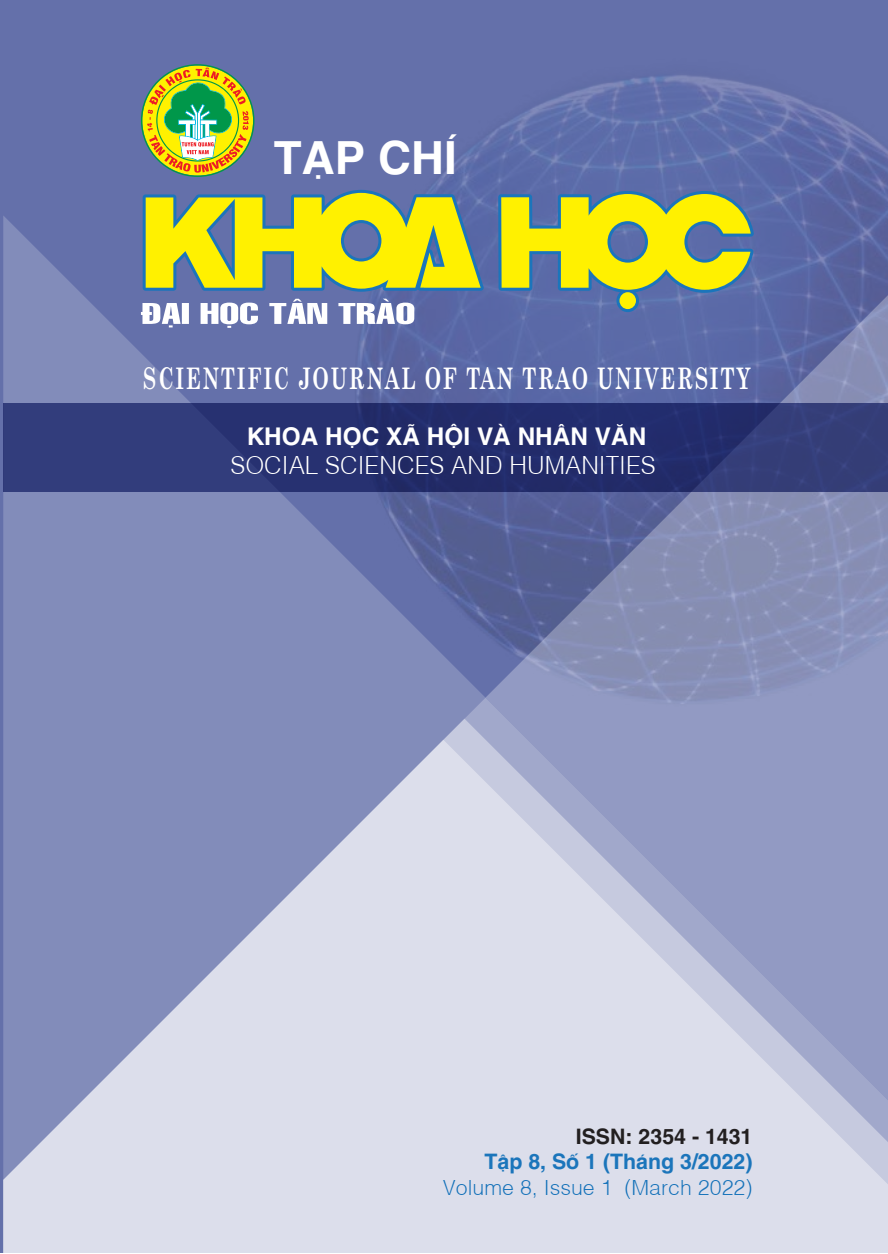THE ART OF DECORATING STATUES IN LAU THUONG COMMUNAL HOUSE
DOI:
https://doi.org/10.51453/2354-1431/2022/711Keywords:
Art of decorating statues, worshiping statues, architectural decorative statues in Lau Thuong communal house, Viet Tri city, Phu Tho provinceAbstract
The art of decorating statues in the Lau Thuong communal house Lau Thuong communal house is one of the large communal house with longstanding historical and artistic value in Viet Tri City, Phu Tho province. The communal house was born in the end of the seventeenth century, bringing both basic features like the communal house of the same period in general, and many unique poetic features, especially in the art of carving, this is the only communal house in the whole province, form into worshiping statues are used to decorate the altar and a series of other decorative statues systems on the architecture, even in some small statue wooden carvings are used as one of the important layout components to make the carvings more graceful and meaningful. In general, with the contribution of the art of decorating statues in the Lau Thuong communal house, it has more or less contributed to creating cultural, historical and aesthetic values for the largest and typical ancient communal house in the land of Hung Vuong.
Downloads
References
[1] Department of Information and Communications – Phu Tho (Provincial Museum), List of relics of Lau Thuong communal house.
[2] Bien,T.L. (2014), Vietnam village temples (The red River Delta), The Gioi Publishers.
[3] Tan,H.V., Ku, N.V. (1998, reprint 2014), Vietnam’s temple, Social Science Publishing House, Hanoi.
[4] Tuan,T.D (2012), Human image in temple carvings in the Red River Delta region, Dissertation of Theory and History of Fine Arts, Vietnam National Institute of Culture and Arts Studies.
[5] Institute of Fine Arts (1975), Vietnam folk sculpture – 16th – 17th – 18th centuries, Foreign Language Publishing House - Hanoi.
[6] Van,C.T. (2017), “Folk beliefs in the sculpture of Lau Thuong temple and Hung Lo temple”, Cultural Studies Journal , No 21, pp.26 - 33.
Downloads
Published
How to Cite
Issue
Section
License

This work is licensed under a Creative Commons Attribution-ShareAlike 4.0 International License.
All articles published in SJTTU are licensed under a Creative Commons Attribution-ShareAlike 4.0 International (CC BY-SA) license. This means anyone is free to copy, transform, or redistribute articles for any lawful purpose in any medium, provided they give appropriate attribution to the original author(s) and SJTTU, link to the license, indicate if changes were made, and redistribute any derivative work under the same license.
Copyright on articles is retained by the respective author(s), without restrictions. A non-exclusive license is granted to SJTTU to publish the article and identify itself as its original publisher, along with the commercial right to include the article in a hardcopy issue for sale to libraries and individuals.
Although the conditions of the CC BY-SA license don't apply to authors (as the copyright holder of your article, you have no restrictions on your rights), by submitting to SJTTU, authors recognize the rights of readers, and must grant any third party the right to use their article to the extent provided by the license.


